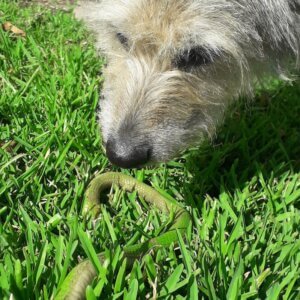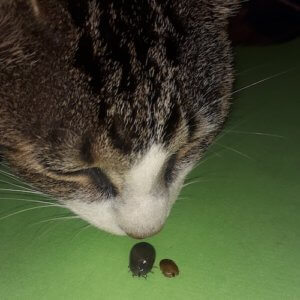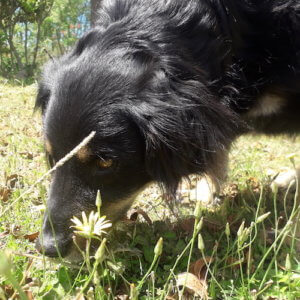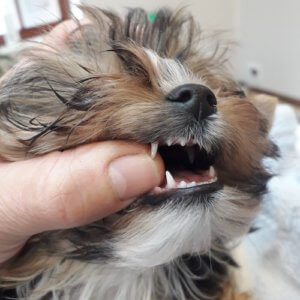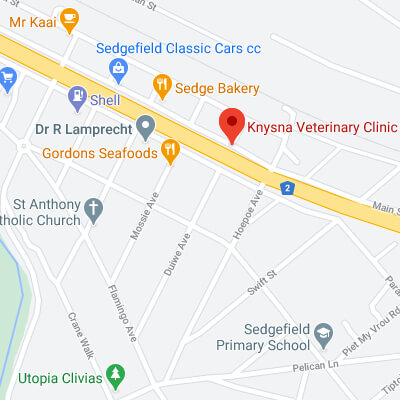It’s wintertime again, and our old friends are feeling it.
Arthritis is a surprisingly common condition in our older pets. It is often not noticed or simply ignored and brushed off as, “He is just getting older.”
Osteoarthritis is a chronic, degenerative disease of the joints, and it’s a horribly painful condition. It affects the cartilage (the white, shiny, low-friction joint surfaces), bones and soft tissue of the joint. It can change your old friend’s personality and turn him or her into a “grumpy old dog”. The longer it is ignored, the worse the inflammation gets, and the more painful it becomes.
It is not only our geriatric dogs and cats that are affected by osteoarthritis. These conditions can cause it to happen to pets of any age:
- Developmental abnormalities, like hip- and elbow-dysplasia or slipping kneecaps
- Injuries, especially cruciate ligament rupture and fractures in or near the joints
During the cold winter months, we pay special attention to our arthritic pets.
We’ve formulated a list to chew on. Here’s how to tell if your dog might have osteoarthritis.

Arthritis in Dogs: a Questionnaire
- Does he/she seem stiff, especially in the mornings, and reluctant to get going?
- Have you noticed him/her slowing down or struggling during walks?
- Does he/she struggle getting into the car nowadays?
- Has he/she stopped playing with toys?
- Has he/she stopped jumping up on the sofa?
- Have you noticed any changes in his/her posture?
- Is your dog losing muscle tone?
- Does he/she look “thin” in the hindquarters compared to the front?
- Is there a change in his/her appetite (eating more, or less)?
- Does he/she often eat lying down?
- Is your dog urinating or defecating in a different stance, or does he/she seem in pain when squatting?
- Is your dog often irritable?
- Does he/she look depressed or sad?
- Is your dog still greeting you enthusiastically?
- Does your dog still allow you to brush or groom him/her?
- Is your dog constantly licking at his/her joints?
- Is he/she struggling to climb stairs or get into bed?
- Does he/she have trouble getting into a comfortable sleeping position?
- Have you noticed twitching muscles when he/she is resting?
- Is your dog sleeping more than usual?
- Is he/she panting more often, for no apparent reason?
If you answer “YES” to ANY of these questions, it might indicate that your dog is suffering from OSTEOARTHRITIS.
What About Cats?

When it comes to our feline family, most of the same questions apply. You can also ask yourself:
- Does your cuddly, once clean cat seem more “unkept” with matted fur, especially around his/her tail and back? This is because these areas are too hard to reach for those painfully stiff joints and spine.
- Are your cat’s claws overgrown? Cats’ claws can grow really broad, flat and curly as they grow older and start struggling to climb trees or use a scratching post. This adds to their painful gait, so keep an eye on those retracted claws!
We so often miss a diagnosis of osteoarthritis in cats due to their incredible ability to hide aches and pains.
So, what are my options if I suspect my beloved pet might be suffering from osteoarthritis? Thankfully there are a few solutions that will help them feel more comfortable.
Arthritis Management Options
1. Pain Relief
Non-steroidal anti-inflammatory drugs (NSAID’s) can be life changing. They help with pain relief by reducing inflammation in the joints. These can be discussed in length with your vet. Never give your pets medicine without first consulting their vet!
2. Surgery
This option might be indicated and in some cases is the best treatment choice. Conditions that comes to mind are cruciate ligament rupture, slipping knee caps, fractures, the list goes on. This is once again an option that your vet can discuss with you.
3. Therapy
Physio- and hydrotherapy are often used in conjunction with veterinary care to strengthen muscles and help maintain some level of fitness.
4. Supplements
Dietary joint care supplements in the form of powder, tablets, capsules, treats and prescription pet foods can help a great deal. Keep in mind that, where NSAID’s are quick-acting, joint supplements usually take a few weeks to make a difference.
5. Exercise
Exercise should be minimised or completely avoided at first diagnosis of osteoarthritis, but should gradually be increased to strengthen muscle tone and improve fitness levels. Excessive exercise can increase wear and tear on joints. Exercise should always to tailor-made to an individual patient’s condition and needs.
6. Alternative Treatment
Other treatment options, for example acupuncture, are available. These can also be discussed with your vet and a referral can be arranged if indicated.
7. Weight Loss
Obesity can increase wear and tear on joints enormously: a heavier body puts more pressure on the joints, but fatty tissue also increases inflammation. Weight gain causes a “snow-ball” effect. The heavier a pet, the less comfortable they feel to exercise, the heavier they get. Muscles get weaker, and because of poor muscle tone, the joints must work harder to move.
If your pet has osteoarthritis… don’t wait
If you suspect that your old, or young, furry companion might be in pain, do not wait until their pain is unbearable. Discuss it with your vet. Little niggles can be easier to treat and manage than a full-blown condition where you pet can’t use the affected leg anymore.
Osteoarthritis waxes and wanes – you get good days and bad days. You can help them have fewer “I’d-rather-stay-in-bed-today” days!



